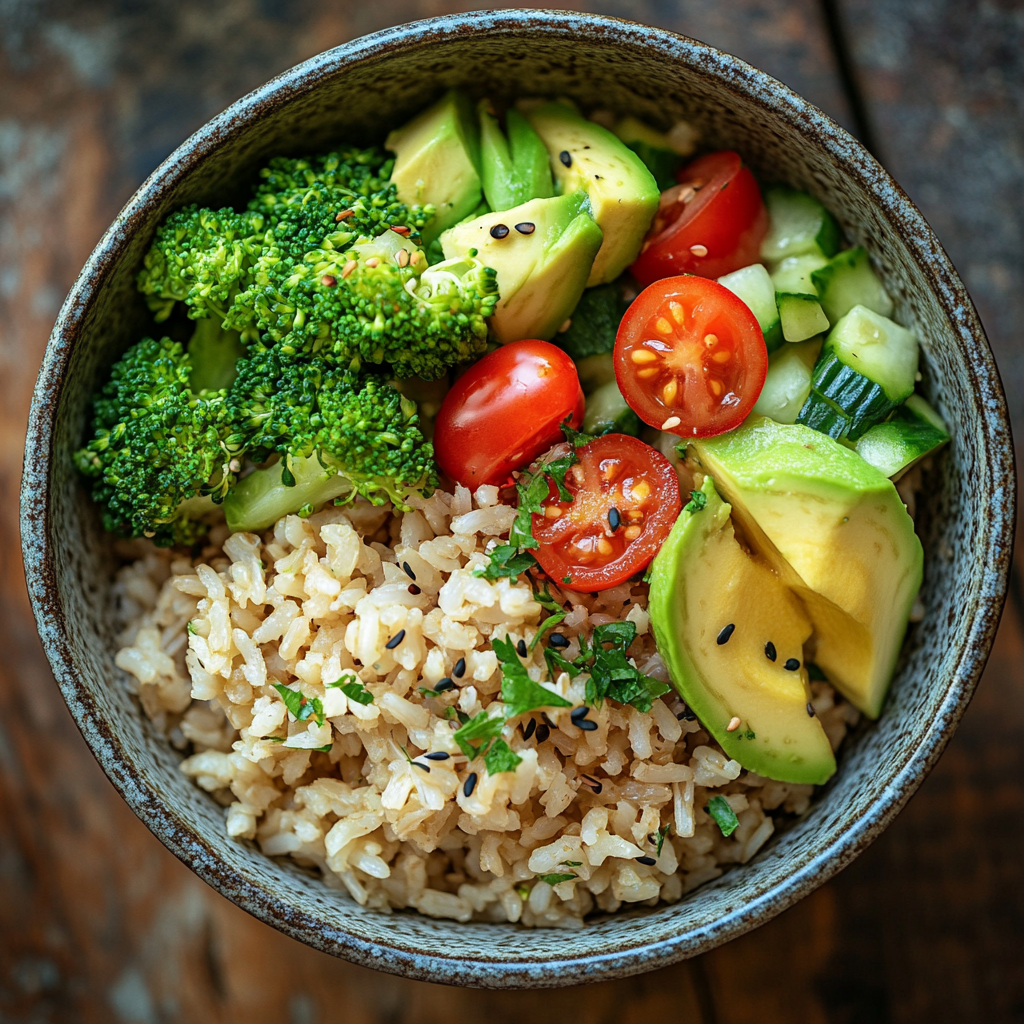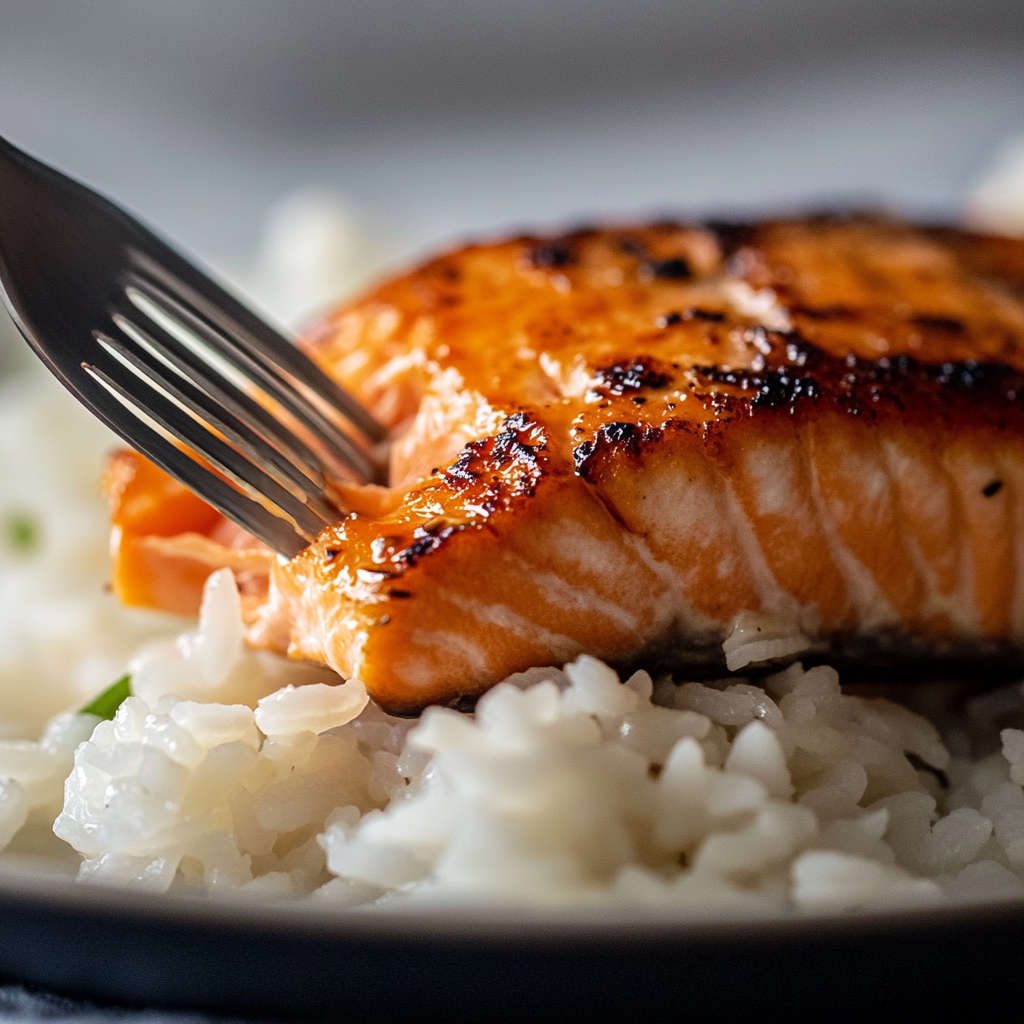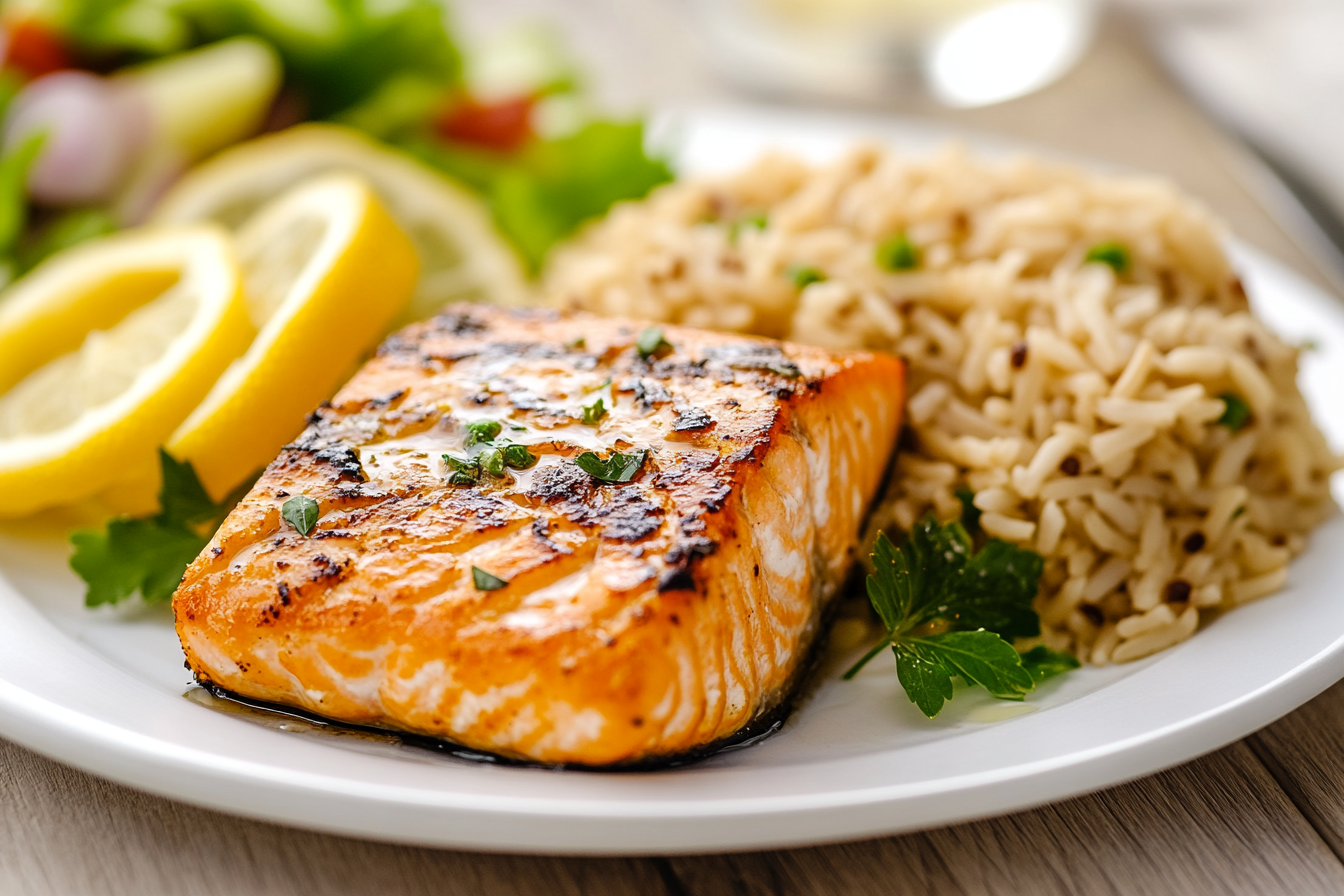 Salmon and rice are two foods that often appear on dinner plates around the world, especially for those looking to maintain a healthy lifestyle. While both offer incredible nutritional value on their own, combining them makes for a powerful, health-boosting meal. In this article, we will dive deep into the nutritional benefits of salmon and rice, explore how they complement each other, and why they should be staples in your diet. If you’re wondering, how healthy are salmon and rice?—you’ve come to the right place.
Salmon and rice are two foods that often appear on dinner plates around the world, especially for those looking to maintain a healthy lifestyle. While both offer incredible nutritional value on their own, combining them makes for a powerful, health-boosting meal. In this article, we will dive deep into the nutritional benefits of salmon and rice, explore how they complement each other, and why they should be staples in your diet. If you’re wondering, how healthy are salmon and rice?—you’ve come to the right place.
This article will explore the essential nutrients found in salmon and rice, their benefits for heart health, weight management, brain function, and much more. Plus, we’ll share some easy ways to cook them while respecting their nutritional value.
The Nutritional Benefits of Salmon
Omega-3 Fatty Acids: A Heart-Healthy Powerhouse
Salmon is one of the most renowned sources of omega-3 fatty acids, which are crucial for overall health. These essential fats (DHA and EPA) cannot be produced by the body, so they must be obtained through food. Omega-3s are celebrated for their heart-protective benefits. They help reduce inflammation, lower triglyceride levels, and prevent the formation of blood clots, all of which contribute to better cardiovascular health.

Research shows that omega-3s found in salmon may reduce the risk of developing heart disease and stroke. They also play a role in lowering blood pressure and reducing the likelihood of abnormal heart rhythms. For those with existing heart conditions, incorporating salmon into the diet is highly recommended by health professionals.
For heart-friendly salmon recipes, you can try the Smoked Salmon Recipe Guide for delicious options that maintain salmon’s nutritional integrity.
Protein: Building Blocks of Life
Salmon is also a fantastic source of high-quality protein. Just one 100-gram serving of salmon provides around 25 grams of protein. This macronutrient is vital for muscle repair, building tissues, and maintaining a healthy metabolism. Consuming enough protein is also essential for your skin, hair, nails, and even the production of enzymes and hormones.
For those engaged in regular physical activities, salmon is an excellent post-workout meal due to its rich protein content. When paired with a complex carbohydrate like rice, it offers a complete meal that promotes recovery and muscle repair.
Vitamins and Minerals: Essential for Vital Functions
Salmon is packed with vitamins and minerals that support various bodily functions. Here’s a breakdown of some of the most important:
- B Vitamins: Salmon is an excellent source of B vitamins, including B12, B6, niacin, and riboflavin. These vitamins are crucial for energy production, supporting the nervous system, and creating and repairing DNA.
- Vitamin D: Salmon is one of the few food sources rich in vitamin D, which is crucial for bone health and maintaining the immune system. Vitamin D deficiency can lead to brittle bones, a weakened immune system, and even mood disorders.
- Selenium: This trace mineral acts as an antioxidant, supporting thyroid function and protecting against oxidative damage.
For those looking to experiment with salmon, our King Salmon Recipe offers a flavor-packed dish rich in these essential vitamins and minerals.
Astaxanthin: A Powerful Antioxidant
Astaxanthin is a carotenoid responsible for the reddish color of wild-caught salmon. This powerful antioxidant helps reduce inflammation and combat oxidative stress in the body. Studies suggest that astaxanthin supports skin health, reduces the risk of cancer, and promotes heart health by improving blood lipid levels.
Incorporating salmon into your diet will not only help you maintain heart health but also contribute to healthier skin and improved anti-aging effects. Consider trying our Salmon Poke Recipe to enjoy the rich flavors of this antioxidant-packed fish.
The Nutritional Benefits of Rice
Rice is one of the most consumed foods in the world, and for good reason—it’s versatile, filling, and provides essential nutrients. While white rice is more common, brown rice and wild rice varieties offer a healthier alternative with more fiber, vitamins, and minerals. Here’s why rice is an excellent companion to salmon for a balanced meal.
Carbohydrates: Fuel for Energy
Carbohydrates are the body’s primary source of energy, and rice is a reliable source of this macronutrient. Brown rice, in particular, is a complex carbohydrate, meaning it digests more slowly, providing a sustained release of energy and preventing spikes in blood sugar. This makes it a great choice for people looking to manage their energy levels throughout the day.
Fiber: Supporting Digestive Health
Brown and wild rice varieties contain a significant amount of fiber compared to white rice. Fiber is essential for promoting healthy digestion, maintaining bowel regularity, and preventing constipation. Additionally, fiber helps reduce cholesterol levels and supports heart health.
For those aiming to improve their fiber intake, switching from white rice to brown or wild rice is a simple yet effective dietary change.
Vitamins and Minerals in Rice
- Magnesium: Brown rice is an excellent source of magnesium, which supports bone health and muscle function. Magnesium also plays a role in over 300 enzymatic reactions in the body, including energy production.
- Manganese: This essential mineral found in rice supports metabolism and helps protect the body against oxidative damage.
For a recipe that perfectly balances carbohydrates and fiber, try our Salmon Rice Recipe, which pairs the protein-packed fish with nutritious rice for a complete meal.
How Healthy Are Salmon and Rice Together?
A Balanced Macronutrient Profile
When combined, salmon and rice offer a balanced meal with all three macronutrients—proteins, carbohydrates, and healthy fats. Together, they create a meal that can sustain energy, repair muscles, and provide essential nutrients for overall health.
The protein in salmon helps maintain and repair muscles, while the carbohydrates in rice provide sustained energy. Additionally, the healthy fats in salmon (omega-3s) complement the meal by reducing inflammation and supporting brain health.

Heart Health Benefits
Salmon is well-known for its heart-healthy properties due to its high omega-3 content. When paired with fiber-rich rice, especially brown or wild rice, the benefits are magnified. Fiber helps regulate cholesterol levels, and omega-3s reduce triglycerides, making this combination a perfect meal for those focused on cardiovascular health.
For more heart-healthy meal options, check out our Old-Fashioned Salmon Patties Recipe, which offers a wholesome and tasty alternative to traditional salmon dishes.
Weight Management and Satiety
Both salmon and rice can be part of a weight management plan. Salmon’s protein content helps increase feelings of fullness, reducing the likelihood of overeating. The fiber in brown rice adds bulk to your meal, making it more satisfying and helping you stay full for longer.
For those aiming to control their weight, the combination of salmon and rice provides essential nutrients without excess calories, especially when you use healthier cooking methods like baking, grilling, or steaming.
If you’re curious about portion sizes and how to incorporate this meal into your weight loss plan, try our Salmon Bites Recipe, which offers smaller, manageable portions of this nutritious combination.
Brain Health and Cognitive Function
Omega-3 fatty acids, particularly DHA, are crucial for brain health and cognitive function. DHA is a major structural component of the brain and retina, and a deficiency can lead to problems with learning, memory, and behavior. Studies suggest that regular consumption of omega-3-rich foods like salmon can reduce the risk of cognitive decline, depression, and Alzheimer’s disease.
The B vitamins in salmon and rice also play a critical role in maintaining brain health. Vitamin B6 and B12, for example, are involved in the production of neurotransmitters like serotonin and dopamine, which help regulate mood.
For those interested in brain health, incorporating more salmon into your diet can be a significant step toward preventing cognitive decline. Our Smoked Salmon Recipes provide easy ways to include this brain-boosting fish into your weekly meal plan.
Sustainable Eating: Choosing the Best Salmon and Rice
Wild-Caught vs. Farmed Salmon
When selecting salmon, it’s important to consider sustainability and quality. Wild-caught salmon is typically considered the best choice for both nutritional value and environmental sustainability. It contains higher levels of omega-3s and lower levels of pollutants compared to farmed salmon. When shopping, look for labels like Marine Stewardship Council (MSC) certification to ensure you’re choosing responsibly sourced fish.
Farmed salmon, while more affordable, often contains higher levels of toxins and is lower in omega-3s. However, certain certifications (such as ASC) ensure better farming practices. If farmed salmon is your only option, opt for those certified for sustainability and lower environmental impact.
For more on preparing wild-caught salmon, check out our Guide to Cooking King Salmon.
Brown Rice vs. White Rice
When it comes to rice, brown and wild varieties are generally healthier than white rice due to their higher fiber and nutrient content. Brown rice retains the bran and germ layers of the grain, which are rich in fiber, vitamins, and minerals. White rice, on the other hand, has these layers removed, making it less nutritious.
If you’re trying to maintain a balanced diet, aim to incorporate brown or wild rice into your meals. Not only do they provide more fiber, but they also have a lower glycemic index, which means they won’t cause sharp spikes in blood sugar.
How to Cook Salmon and Rice
Cooking salmon and rice is incredibly versatile. Salmon can be baked, grilled, poached, or even smoked, while rice can be steamed or boiled, depending on your preferences. Here are some tips to maintain the nutritional value while preparing these foods:
- Grill or Bake Your Salmon: Grilling or baking salmon helps retain its nutrients and adds flavor without the need for excessive oil or butter. Avoid frying, as this can diminish the omega-3 content.
- Steam Your Rice: Steaming rice is one of the healthiest ways to prepare it, as it helps retain its natural nutrients without adding excess fats or sodium.
For a unique spin on traditional salmon dishes, try our Salmon Bites Recipe, which offers a fun, bite-sized way to enjoy this healthy food.
Conclusion: How Healthy Are Salmon and Rice?
Salmon and rice are a nutritional powerhouse when combined. From omega-3 fatty acids that support heart and brain health to the fiber-rich benefits of brown rice, this duo offers a complete meal for those looking to maintain or improve their overall well-being.
Whether you’re looking for a meal to support heart health, weight management, or brain function, incorporating salmon and rice into your diet can make a world of difference. Plus, with their versatility in the kitchen, the options are endless for creating delicious, healthy meals.
For more inspiration, check out our Salmon Rice Recipe or explore our Smoked Salmon Recipe Guide for more ways to enjoy the incredible health benefits of salmon and rice.

